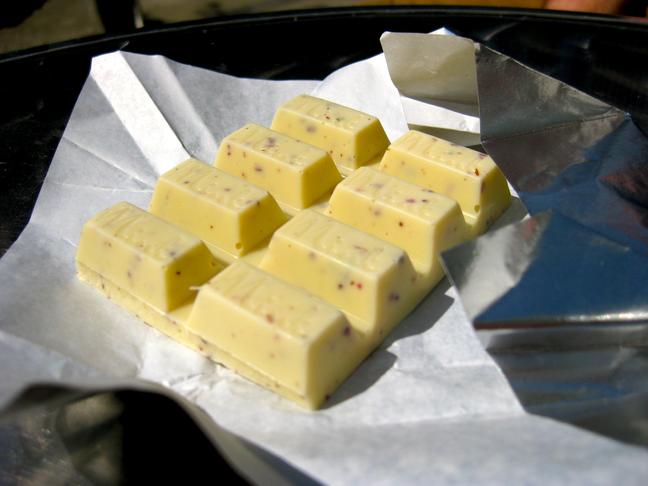3 things to know about white chocolate: current woman Mag path 2 645dbcb3-7979-441a-ba4b-98e7bf17e1be 1785b508-2a96-4cf5-aa87-79b0fe0441bf
In France and in many regions of the world, chocolate is a flourishing industry.Each Frenchman also consumes more than 7 kg per year on average!Among the many products marketed, white chocolate, appreciated for its creamy texture and its sweet taste is still as successful but still raises some questions and some categorically refuse to put it in the category of "chocolates".We explain everything to you to see more clearly.
How is white chocolate made?
To understand how white chocolate is made, you must first be interested in making chocolate.Chocolate comes from the cocoa tree, a tropical tree that produces large fruits in the shape of a rugby balloon called “pods”.The cocoaway is a delicate and fragile tree that produces only twenty pods per year inside which are around forty cocoa beans.
The harvested beans are very bitter and require very special treatment: they are fermented and then dried in the sun and finally roasted (to stimulate the aroma of chocolate).The seeds are then dissected and crushed before being crushed to obtain cocoa liqueur also called "cocoa mass".Once extracted and pressed, the mass of cocoa is subdivided into two elements: oil (which by coagulating turns into cocoa butter) and pure cocoa.The dosage of these two elements makes it possible to manufacture several types of chocolates:
What is the difference between white chocolate, milk chocolate and dark chocolate?
Who invented white chocolate and what is his story?

White chocolate was invented in 1930 by the Nestlé group in Switzerland to exploit the surplus of cocoa butter used to make chocolate.This made it possible to avoid many losses and attract a maximum of consumers with a new range of chocolates.
Did you know ?Until the 20th century, cocoa butter was used for pharmaceutical purposes to design ... suppositories!Fortunately, he found his right place in pastry and still reinvents himself: in 2006, the Valrhona brand developed a new range of blond chocolates (from a white chocolate caramelization) called Dulcey chocolates.
Today, white chocolate is subject to strict regulations in the European Union and in Switzerland where it must at least contain 20 % butter and 14 % of dairy products to be marketed under this name.In the United States, where white chocolate has experienced a great success since its first marketing in the late 1940s, the rate of sweetening products should not exceed 55 %.
Read also :
⋙ White chocolate: 5 gourmet recipes and easy to test
⋙ Cyril Lignac: its hyper easy white chocolate mousse recipe
⋙ Milk chocolate or dark chocolate, what is the best for health?
Eudaemonism: all about this philosophy of happiness
GO
How Danielle Collins became a champion again despite having endometriosis
GO
Effects of palm oil on health: what are the dangers?
GO
Seven cases of COVID-19 are added to the regional balance sheet of Gaspésie
GO